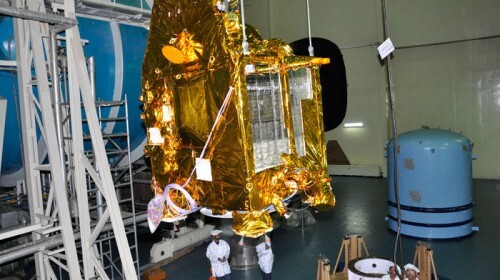This morning, India launched the spacecraft Mangalyaan (Mars rover), which is supposed to orbit Mars and is built entirely with instruments made in India * NASA will add MAVEN to it in two weeks

Update as of 14:12 p.m
אתר Universe Today reports Because the launch of the first Indian spacecraft to Mars went without a hitch. Thus began a long and unprecedented journey of an Indian spacecraft across the solar system. Mangalia's journey will last ten months and when it arrives it will begin to circle the red planet and explore its atmosphere.
The spacecraft was launched into space on a four-stage rocket named Polar Satellite Launch Vehicle (PSLV) at exactly 09:08 GMT (11:08 Israel time) by the Indian Space Research Organization (ISRO) which is actually the Indian space agency from the Satish Dhawan Space Center in Sriharikota , on the east coast of India.
India launches first spacecraft to the Red Planet
By Itay Nebo, 05/11/13 time 10:00
If everything goes well, this morning India will take a small step towards joining a very limited and prestigious club of countries that launch spacecraft to Mars. So far, only the US, Russia and the European Union have sent spacecraft to the Red Planet. The Mangalyaan spacecraft - "Mars vehicle" in Hindi - is supposed to reach its destination in about ten months, enter orbit around it and study - from the air - its structure and the composition of its atmosphere, with instruments entirely made in India. "India's space policy has undergone a considerable change in the last two decades," says Dr. Daganit Paikovsky, coordinator of the space committee at the National R&D Council. "In its beginning this was a very practical program, and was intended to promote all citizens of India directly, with the help of communication satellites and satellites that would contribute to health and agriculture. From the end of the 70s, and especially from the end of the Cold War, India expanded the variety of space missions, and began to go in directions that have no immediate benefit, such as this mission to Mars."
The emerging east
India's space ambitions can be attributed to a large extent to the ambitions of its big neighbor, which is building its own space station and is currently celebrating a decade since the flight of the first Technaut. "India is always looking to see what China is doing, not necessarily as a threatening factor, but to see how it positions itself," says Paikovsky. "When China uses space as a first-class diplomatic tool, India also begins to think - and act - in this direction."
If in the past, the issue of military advantage was the basis of the space race between the superpowers, then even today this issue has not completely disappeared. "The competition has strategic aspects, not necessarily security ones," says Dr. Paikovsky. "Space, like missiles and nuclear, is a symbol of power and status, but in addition to the symbol there is also the essence of power. What connects space with other capabilities is a means of launching, and in the end it is usually technologies that have a dual use - both security and civil."
It's getting crowded
Mangalyaan won't do the long way to Mars all by herself. In about two weeks, the USA will also launch the research spacecraft MAVEN (progenitors of the Mars Atmosphere and Volatile Evolution Mission - a mission to study the atmospheric history of Mars). It too is supposed to enter orbit around Mars in September 2014, and perform measurements at different altitudes to better understand the nature of Mars' atmosphere, and try to understand what caused its depletion. Scientists estimate that the decrease in the density of the atmosphere of Mars is what caused the planet to dry out, since it allowed the liquid water that was on its surface in the past to evaporate into space. According to the plan, the atmospheric data collected by the two spacecraft - the American and the Indian - will complement each other and give researchers a much better and more accurate picture of the atmosphere at different altitudes and in different regions. It is interesting to note that despite the certain similarities between the missions, in India they claim that the cost of the mission will amount to only 70 million dollars, compared to a price tag of more than 480 million for the American spacecraft (not including the launch cost, another 190 million dollars). The two spacecraft join three satellites already orbiting the skies of Mars: the American Mars Reconnaissance Orbiter and Mars Odyssey, as well as the European Mars Express, and of course the two probes Curiosity and Opportunity, which continue to survey the surface of Mars. All of these should prepare the ground for the biggest challenge: landing a man on Mars one day.
